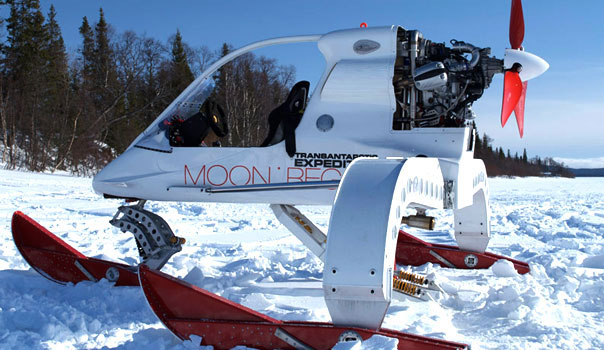Way back in November of 2008 I wrote about the then newly designed CIV (Concept Ice Vehicle) that was being prepped for a trans-continental ride across Antarctica as part of the Moon-Regan Expedition. Fast forward two years, and it looks like they’ll finally be getting underway later this fall, when the Antarctic season returns at last.
Our friend Jon Bowermaster wrote an updated story on the CIV and the expedition for TakePart.com last week, filling in the blanks on what has been happening in recent months. It seems that the team is still hoping to make the 3000 mile transantarctic journey, and do so in record time, with their high-tech sled, designed by Lotus and powered by bio-fuel. The expedition is expected to take 40 days to complete, departing from Patriot Hills and ending at McMurdo Station.
The team will consist of 11 researchers and a couple of support vehicles that will carry the actual gear, food, and equipment. The Ice Vehicle only carries one rider at a time, although it is capable of hitting 84 mph on the ice. The high-tech sled will also use a special GPS enhanced, ground penetrating radar to keep an eye out for crevasses, being able to avoid them at high speeds will be a completely different issue however.
The expedition has two goals in mind. First, it will test out the value and performance of biofuels in extremely cold weather and secondly the team hopes to raise awareness of the impact of global climate change on environment, particularly in the arctic conditions found at the South Pole. Of course, we know that the Ice Vehicle will use environmentally friendly fuels as it passes through the Antarctic on its mission, but how about those support vehicles? What exactly will they be burning? Hmm?!?
With the 2010 Antarctic Season on the horizon, I’ll be following this one closely.
- Gear Review: The Xero Scrambler Mid is an Ultralight Hiking Shoe for Spring - March 1, 2023
- Gear Review: Yeti Roadie 48 Wheeled Cooler - August 18, 2022
- Kristin Harila Continues Pursuit of 8000-Meter Speed Record - August 16, 2022

Next level shit!
Looks like fun huh? 🙂
84 mph on the ice? that is super fast! Not sure how i would feel going that fast on the ice myself, but otherwise it sounds like a pretty good thing.
I know it's capable of those speeds, doubt they'll actually hit that very often in Antarctica. Still, pretty darn fast.